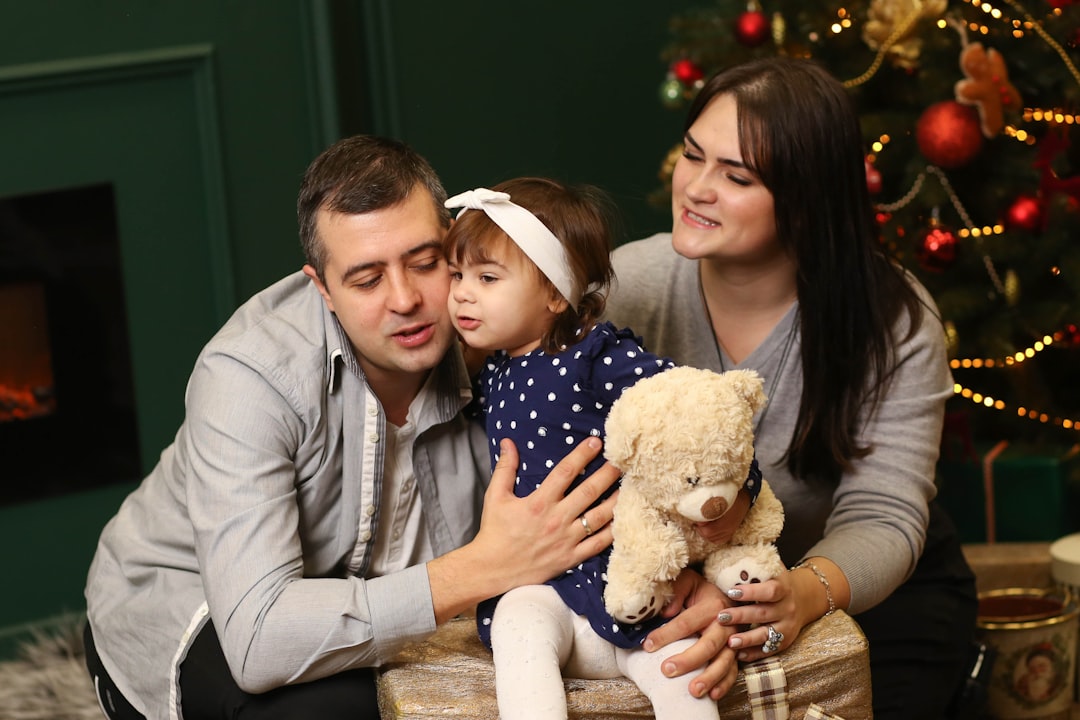Establish Clear Communication Channels Before Crisis Hits

The foundation of family resilience starts with open, honest communication that happens long before any storm clouds appear on the horizon. Recent studies from the American Psychological Association show that families who practice regular check-ins and emotional conversations are 40% more likely to weather significant challenges together. This isn’t about scheduling formal family meetings every week, though that can help too.
Think of it like building muscle memory for your family’s emotional fitness. When everyone knows they can speak freely about their fears, frustrations, and hopes, you create a safety net that catches problems before they become crises. The key is making these conversations feel natural rather than forced, perhaps during car rides or while cooking dinner together.
Create Financial Buffers That Actually Work

Financial stress remains one of the top destroyers of family harmony, with recent Federal Reserve data showing that nearly 60% of American families couldn’t handle a $400 emergency without borrowing money. But building financial resilience isn’t just about having a certain dollar amount in the bank. It’s about creating multiple layers of protection that work for your specific situation.
Start with automating small amounts into separate accounts for different purposes, even if it’s just $25 per month. One family might focus on building a medical emergency fund, while another prioritizes job loss protection. The goal is progress, not perfection, and even modest financial cushions can provide enormous peace of mind when unexpected expenses arise.
Develop Flexible Problem-Solving Skills Together

Resilient families don’t just survive problems, they get better at solving them over time. Research from Stanford University reveals that families who practice collaborative problem-solving during calm periods perform significantly better during actual crises. This means involving everyone in age-appropriate ways when challenges arise, rather than parents handling everything behind closed doors.
Consider how your family handled the last minor inconvenience, like a canceled vacation or broken appliance. Did you tackle it as a team, or did stress fracture your unity? Teaching children to contribute ideas and solutions builds their confidence while strengthening family bonds. Even a seven-year-old can suggest creative alternatives when plans fall through.
Build Your Support Network Before You Need It

The pandemic taught us harsh lessons about the importance of community connections, yet many families remain dangerously isolated. Recent surveys indicate that over 35% of American families report having no close friends they could rely on during an emergency. This isolation makes every challenge feel bigger and more overwhelming than it needs to be.
Strong family resilience requires intentional relationship building with neighbors, extended family, and community members. This might mean joining local groups, volunteering together, or simply making an effort to know the people who live around you. When crisis strikes, these connections become lifelines that can provide everything from practical help to emotional support.
Teach Emotional Regulation as a Family Skill

Emotional resilience isn’t something children develop automatically, and many adults struggle with it too. Current research from the Center for Disease Control shows that families who practice emotional regulation techniques together report lower stress levels and better overall mental health. This involves teaching everyone in the family how to recognize their emotional triggers and respond thoughtfully rather than reactively.
Simple techniques like deep breathing exercises, mindfulness moments, or even having a family code word for when emotions are running high can transform how your household handles stress. The goal isn’t to eliminate negative emotions but to help everyone develop healthy ways to process and express them. When one family member stays calm during chaos, it often helps others do the same.
Maintain Routines That Anchor Your Family

Routines provide stability when everything else feels uncertain, yet they need to be flexible enough to adapt when circumstances change. Family therapists consistently report that households with consistent daily rhythms bounce back faster from disruptions. This doesn’t mean rigid schedules that create more stress, but rather reliable touchpoints that help everyone feel grounded.
Maybe it’s a morning coffee ritual for parents while kids have breakfast, or evening story time that happens no matter what chaos unfolded during the day. These small consistencies become anchors that remind everyone they’re part of something stable and caring. During particularly challenging periods, these routines can feel like lifelines that connect you to normal life.
Plan for Multiple Scenarios Without Creating Anxiety

Effective family planning involves thinking through various “what if” scenarios without becoming paralyzed by worry. Emergency preparedness experts recommend that families discuss potential challenges openly but focus on practical solutions rather than dwelling on worst-case outcomes. This might include having backup childcare arrangements, knowing evacuation routes, or keeping important documents easily accessible.
The key is involving everyone in age-appropriate planning that builds confidence rather than fear. Children can help create emergency kits or learn basic first aid skills, while teenagers might research local resources or help organize family information. When everyone understands the plans and their role in them, unexpected situations feel more manageable rather than overwhelming.
Cultivate Gratitude and Positive Perspective

Resilient families don’t ignore problems or pretend everything is fine, but they do maintain awareness of what’s going well in their lives. Recent psychological research demonstrates that families who practice gratitude together report higher levels of satisfaction and better stress management. This involves actively noticing and discussing positive aspects of daily life, even during difficult periods.
Simple practices like sharing daily highlights at dinner or keeping a family gratitude journal can shift focus from what’s wrong to what’s working. This doesn’t mean toxic positivity or dismissing legitimate concerns, but rather maintaining perspective that helps everyone remember their strengths and resources. When families regularly acknowledge their blessings, they build emotional reserves that sustain them through harder times.
Invest in Health and Wellness as Prevention

Physical and mental health form the foundation of family resilience, yet many families treat wellness as a luxury rather than a necessity. Current health statistics show that families who prioritize preventive care and healthy habits experience fewer crisis situations and recover more quickly when problems do arise. This includes regular medical checkups, mental health support when needed, and lifestyle choices that support overall wellbeing.
Building healthy habits together creates shared goals and mutual support systems within the family. Whether it’s taking evening walks, preparing nutritious meals, or ensuring everyone gets adequate sleep, these investments pay dividends when stress levels rise. Healthy families have more energy and resilience to handle whatever challenges come their way.
Embrace Adaptability as a Family Value

Perhaps the most important characteristic of resilient families is their ability to adapt and evolve when circumstances change. This means letting go of rigid expectations about how things “should” be and instead focusing on how to make the best of whatever situation you face. Flexibility doesn’t mean having no standards or boundaries, but rather maintaining core values while adjusting methods and approaches as needed.
Families who view change as an opportunity for growth rather than a threat to stability consistently outperform those who resist adaptation. This might mean finding new ways to connect when work schedules change, adjusting traditions when family composition shifts, or discovering unexpected strengths during challenging times. The ability to pivot while maintaining your family’s essential character becomes a superpower that serves you well throughout life’s inevitable ups and downs.

